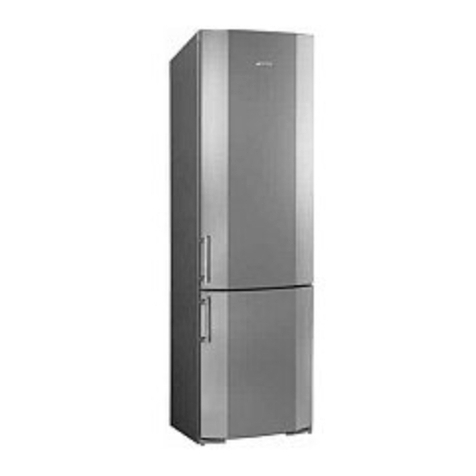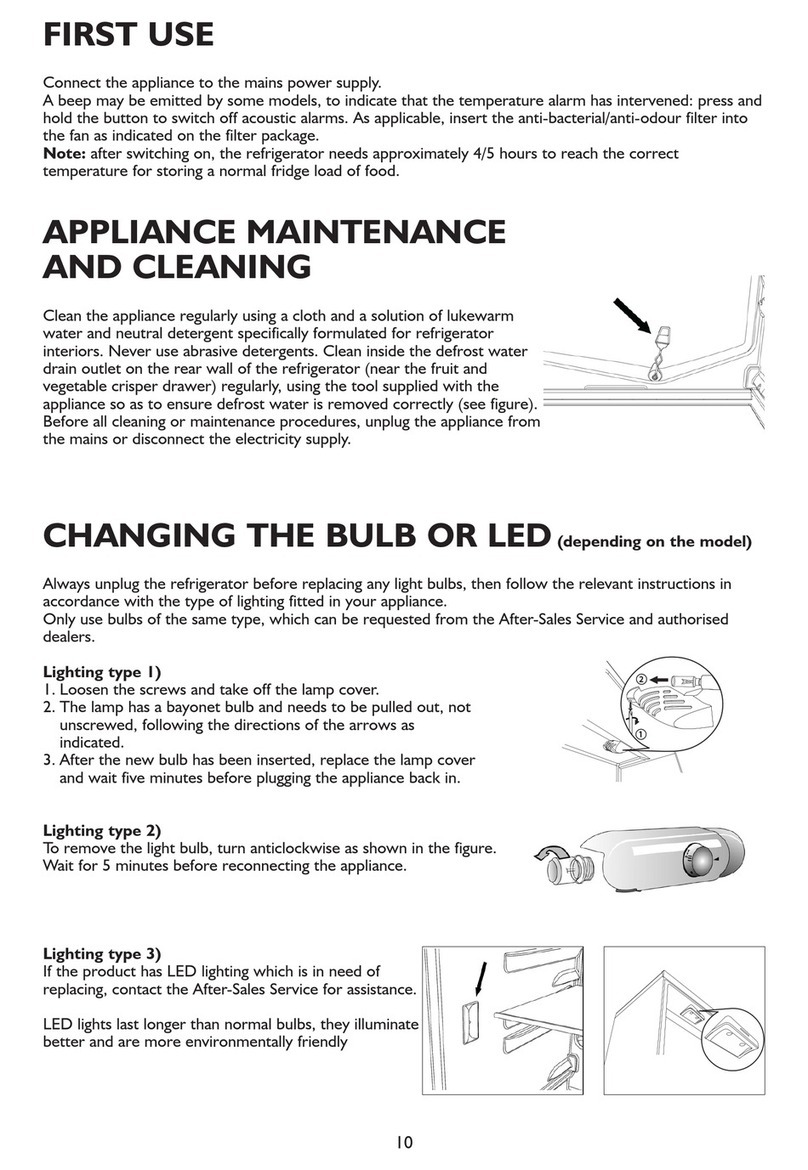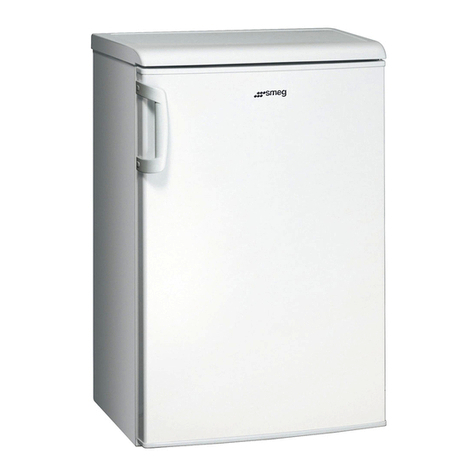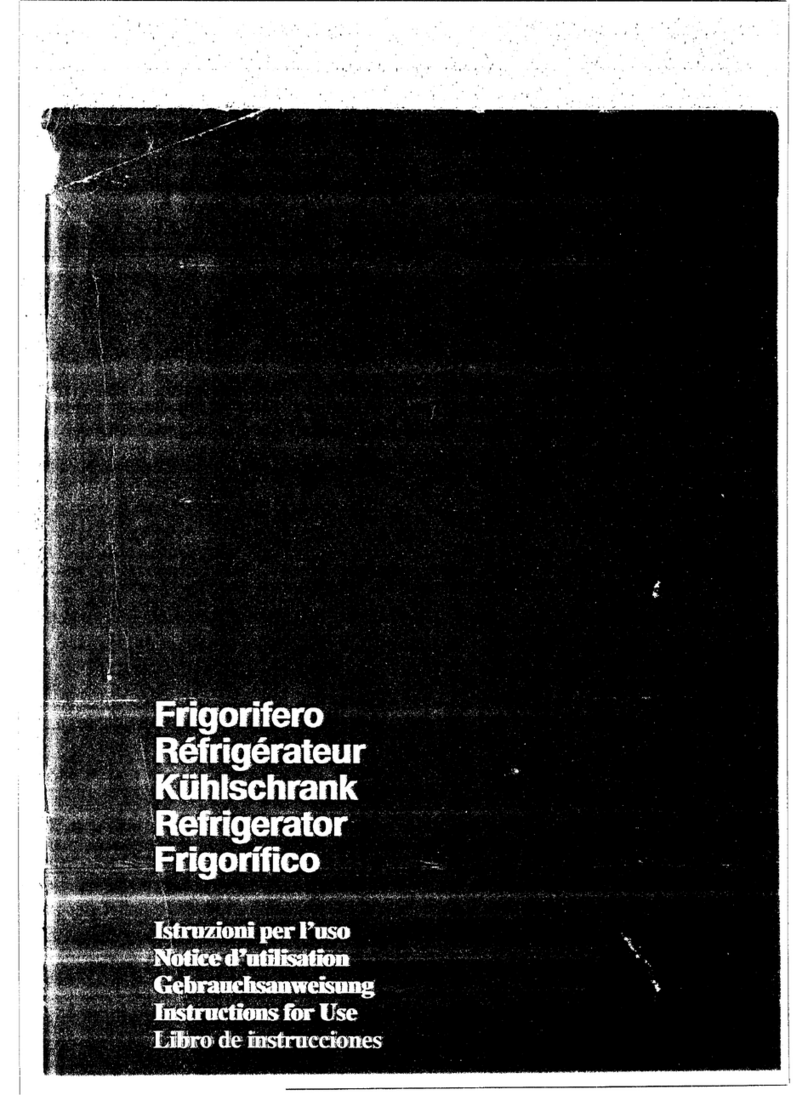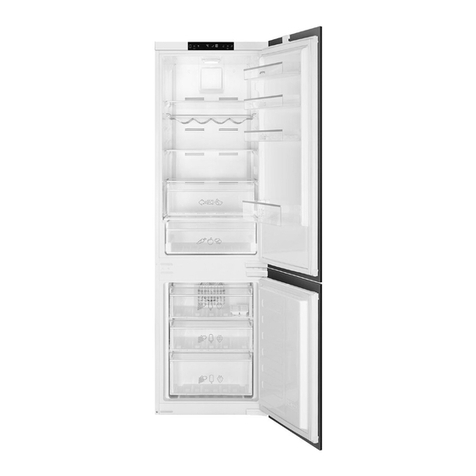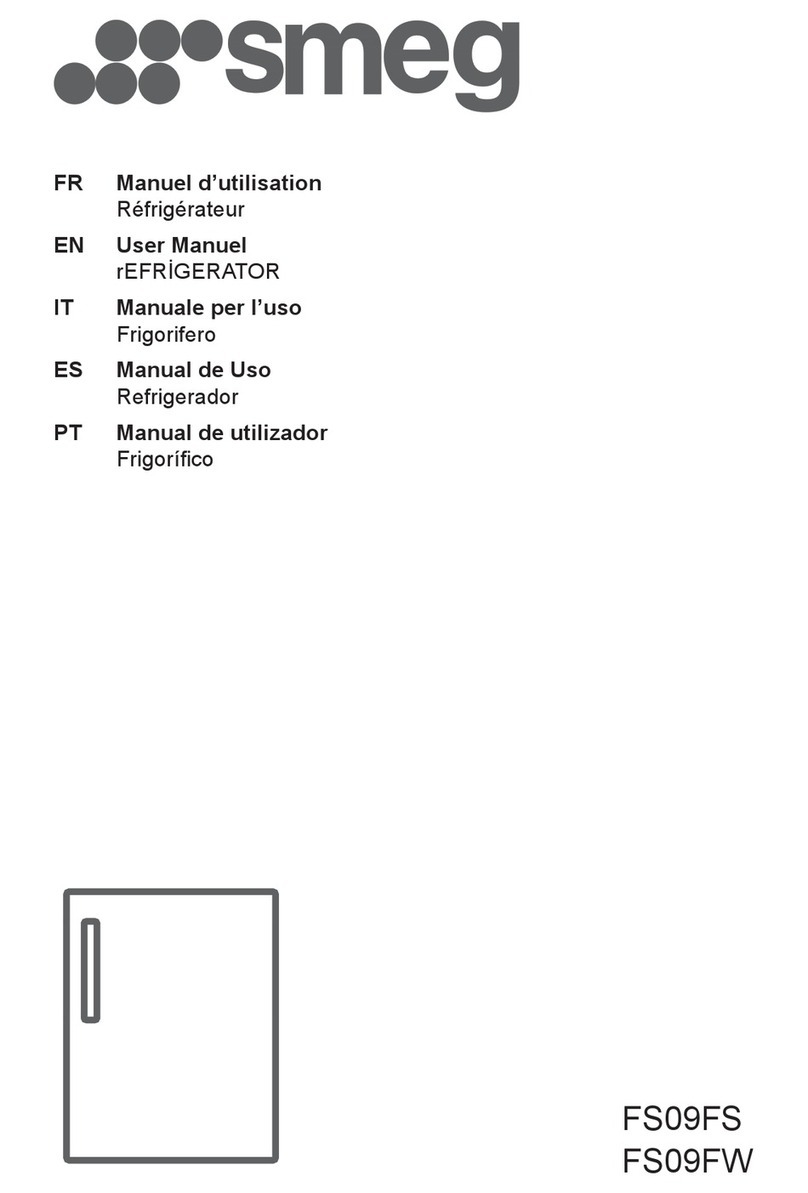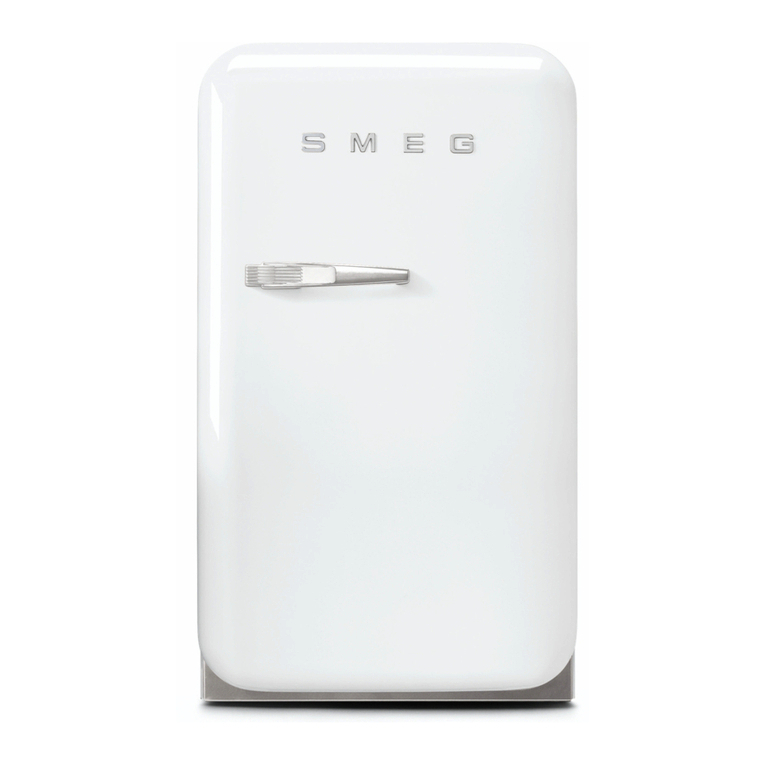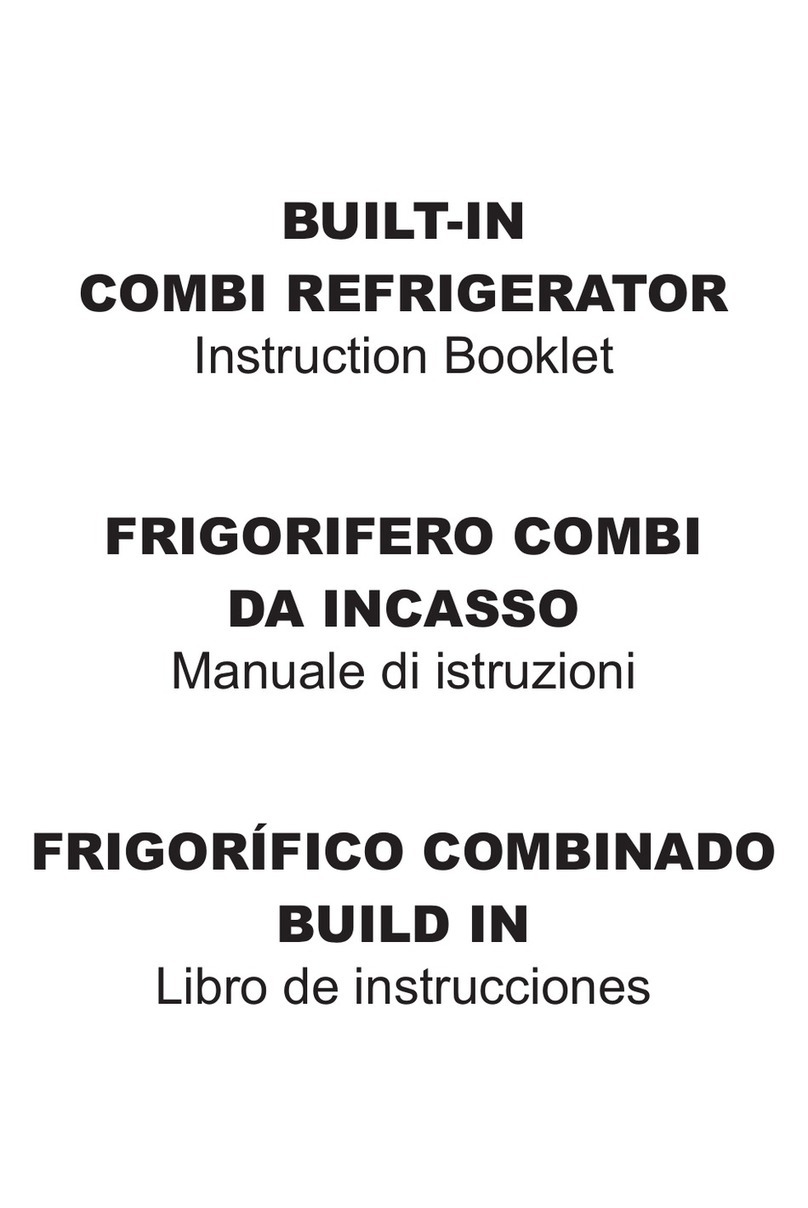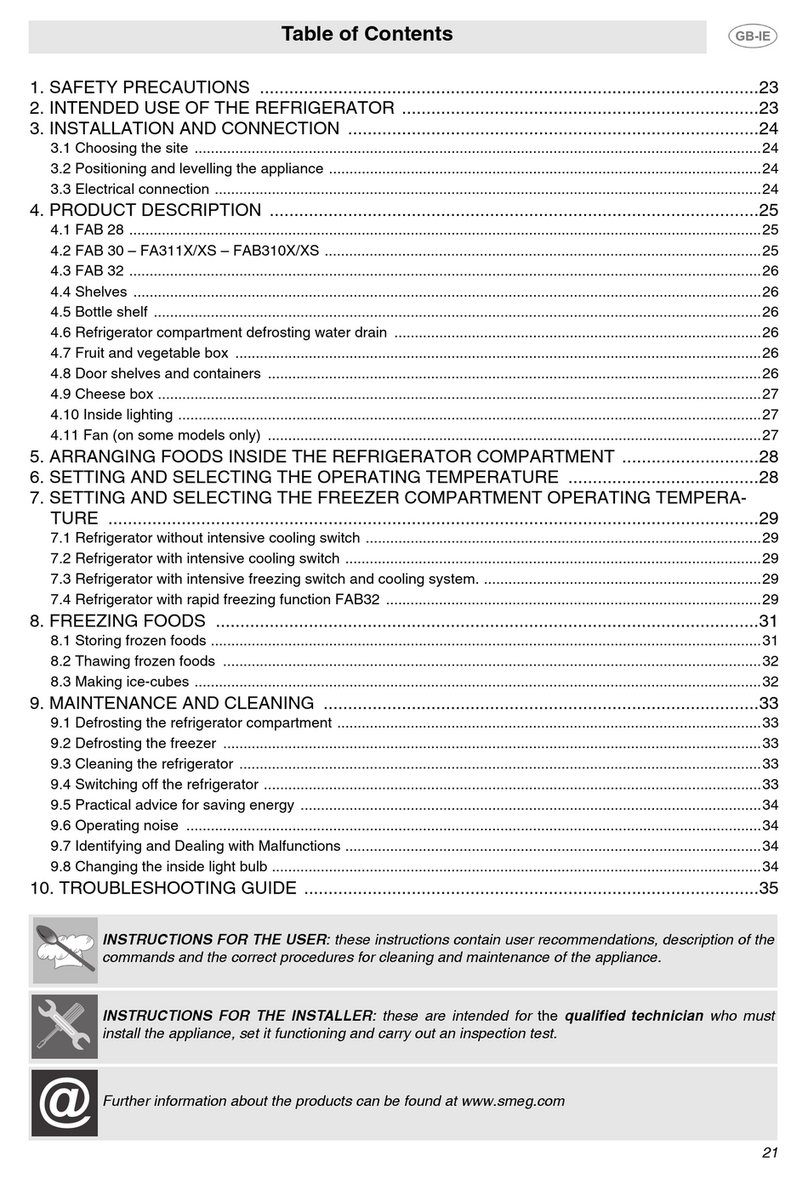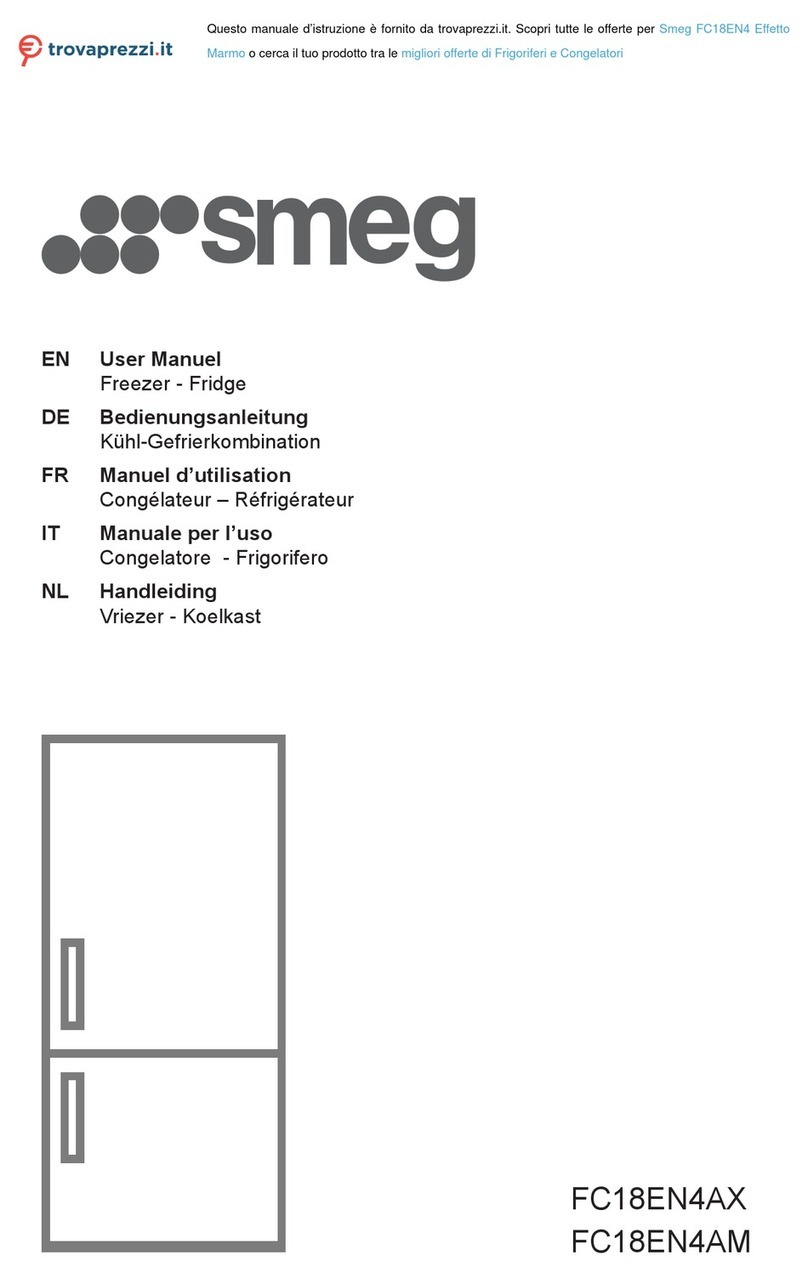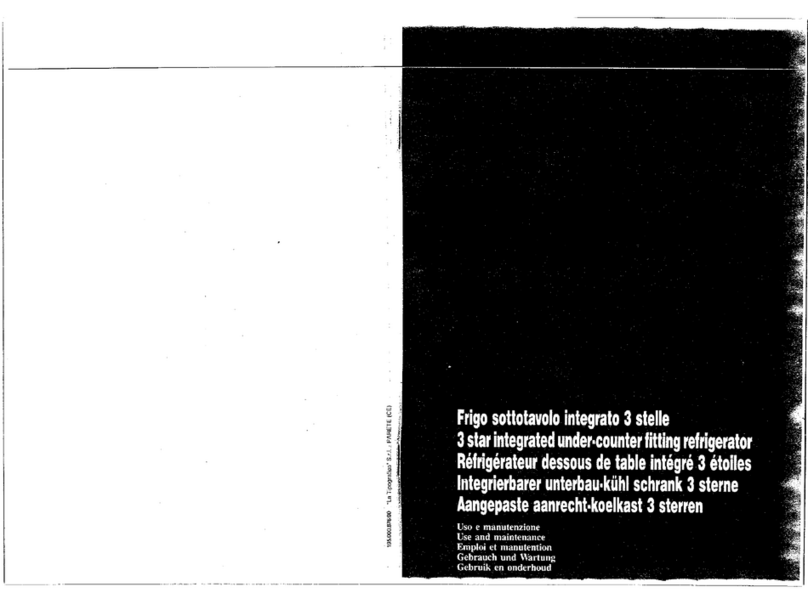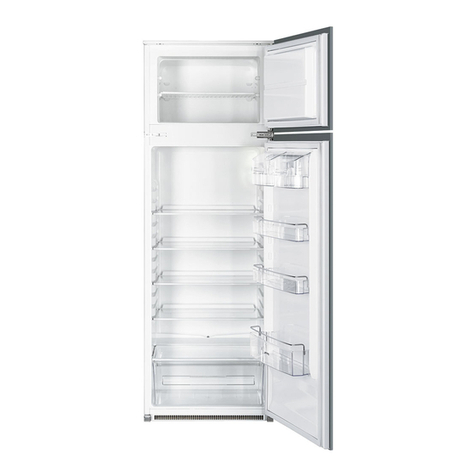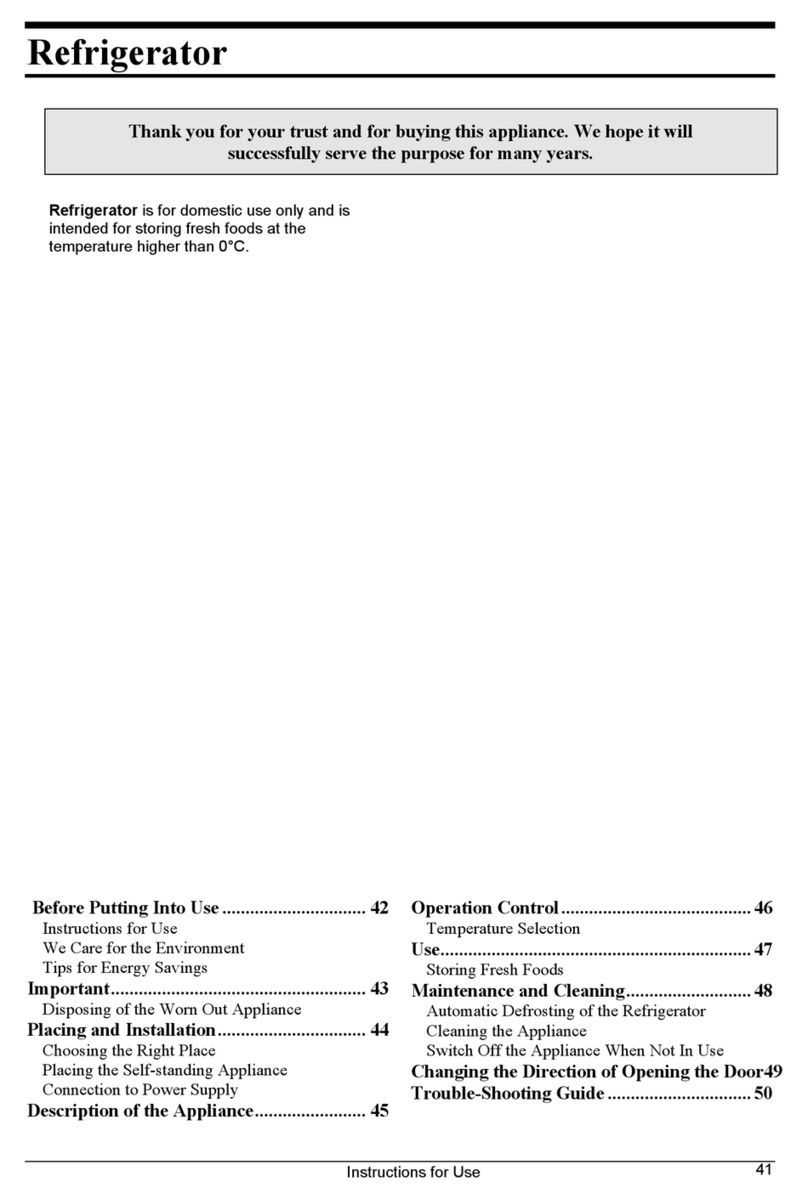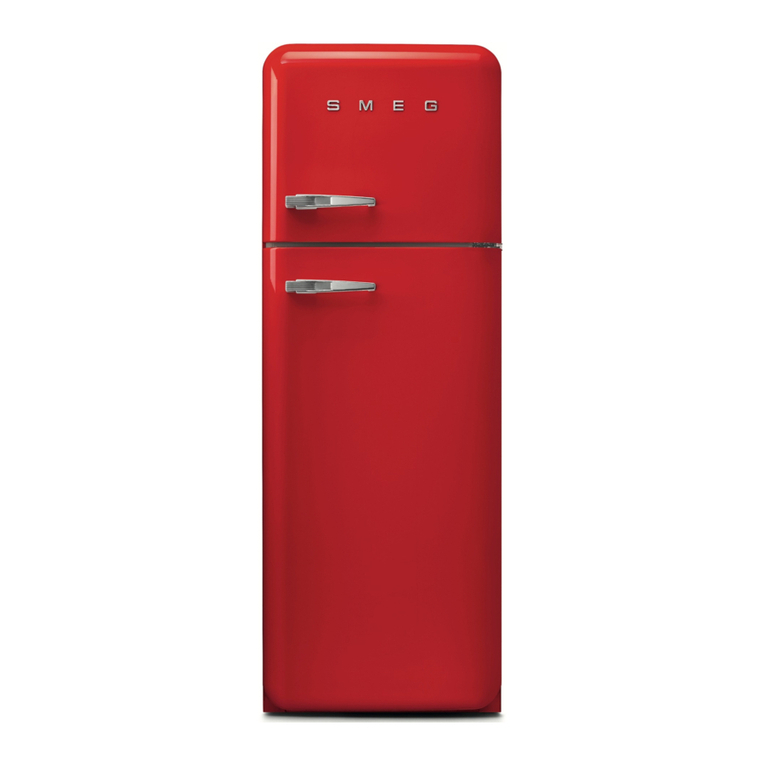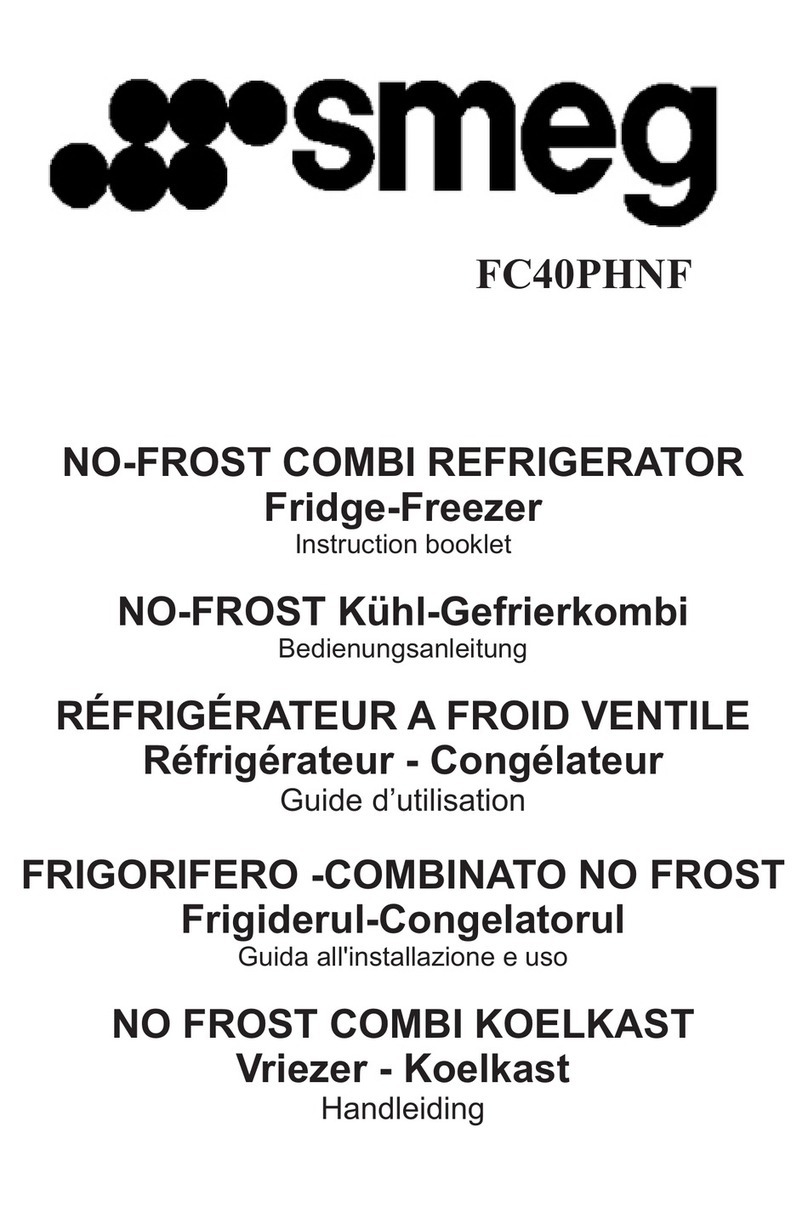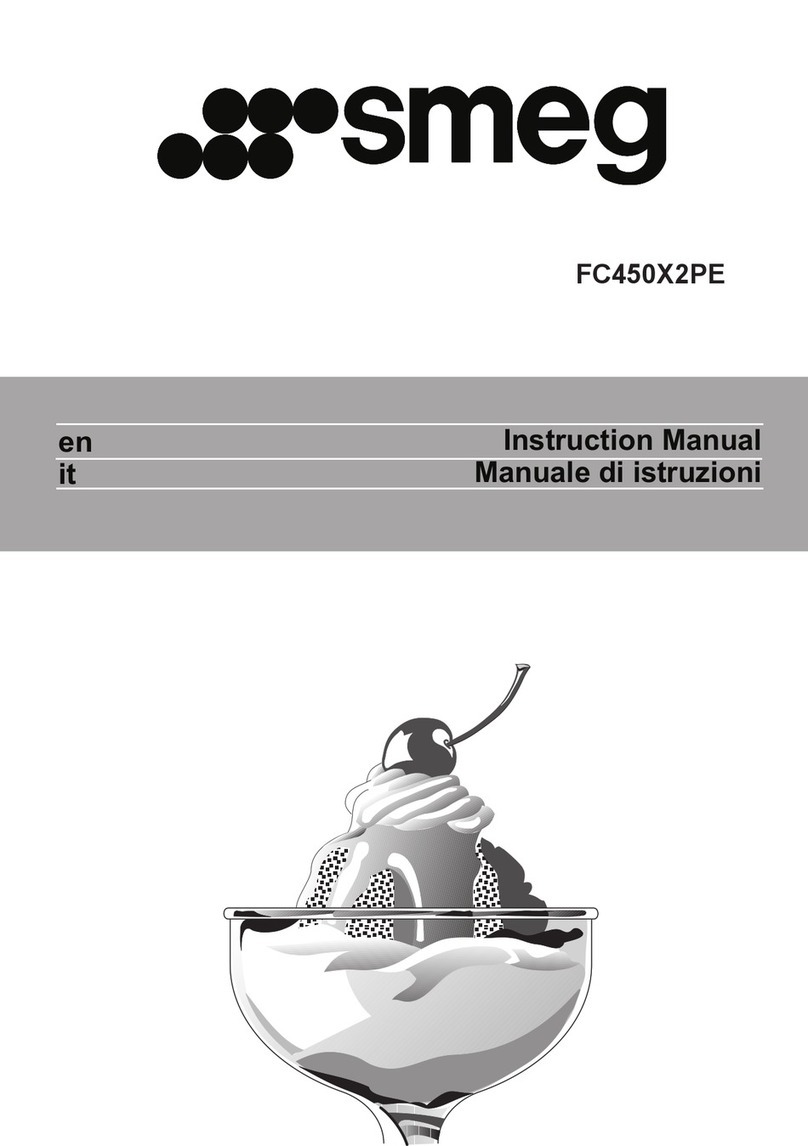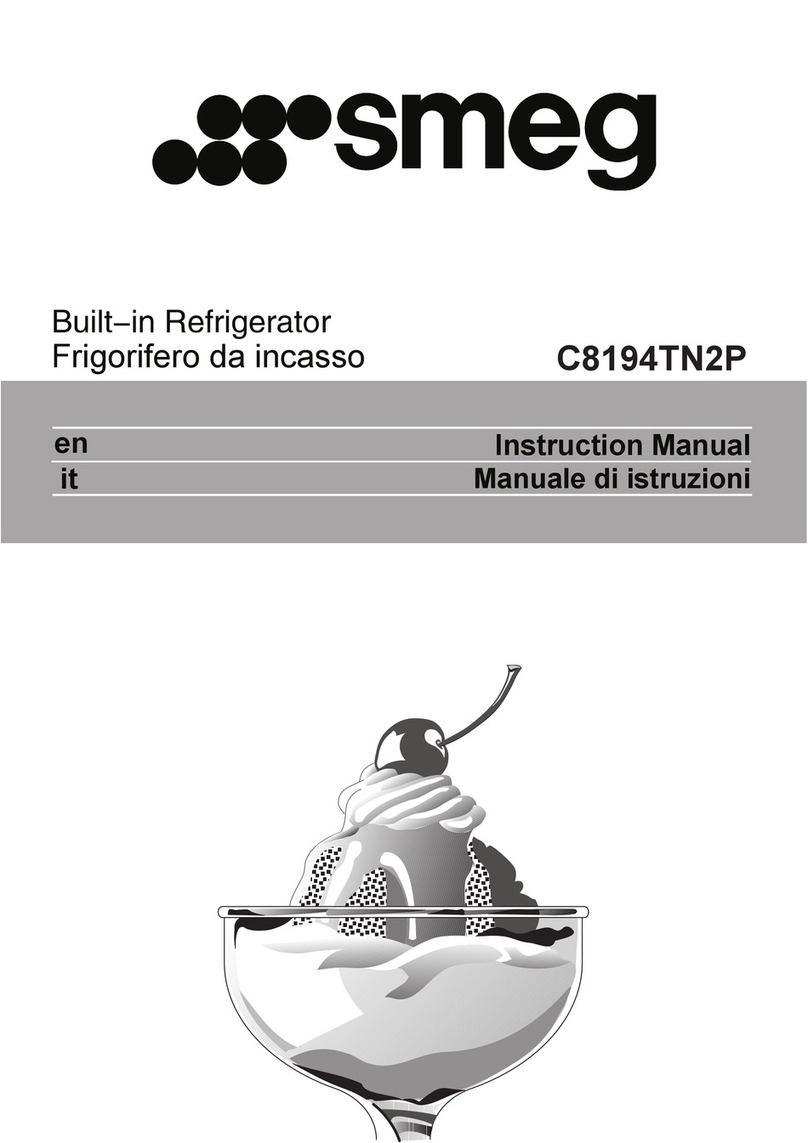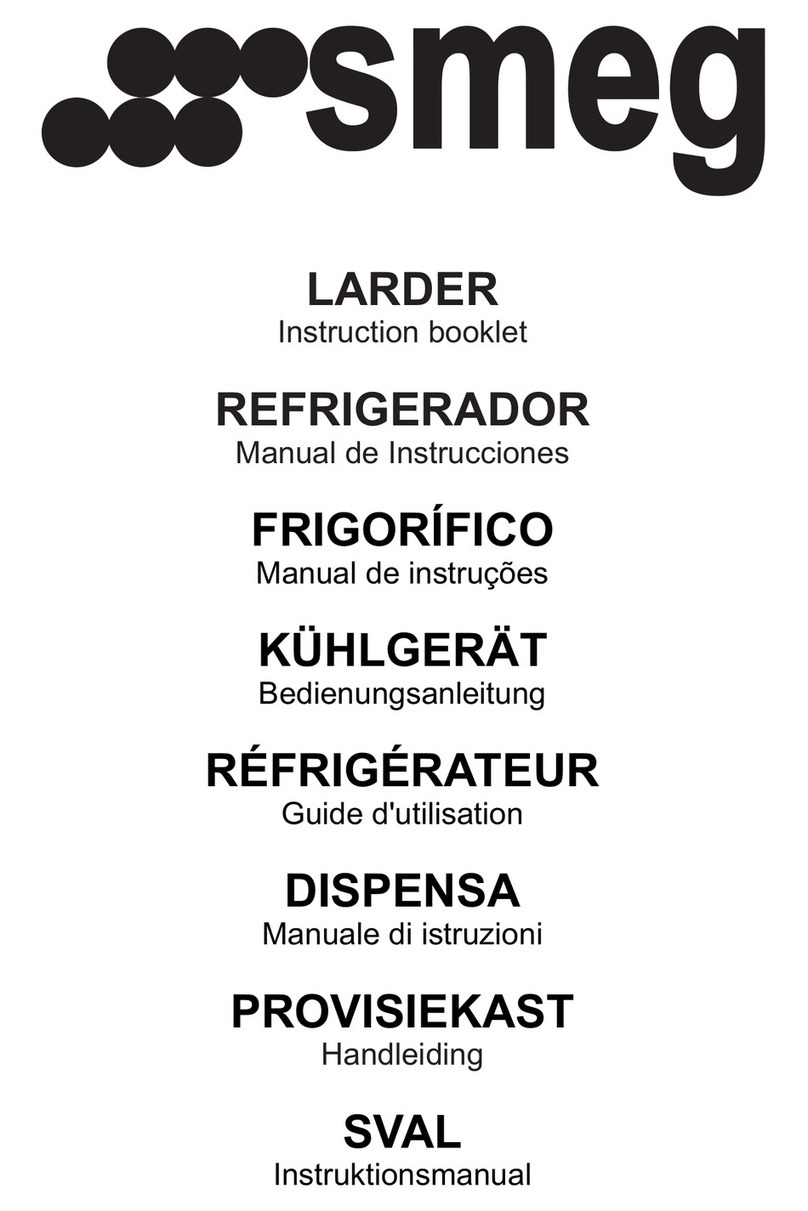Instructions for Use 27
• Every now and then check if the appliance is
sufficiently ventilated (adequate air
circulation behind the appliance).
• Turn the thermostat knob from higher to
lower setting as soon as possible (depends
on how loaded the appliance is, ambient
temperature...).
• Before loading the appliance with fresh food,
make sure it was cooled to ambient
temperature.
• Ice and frost layer increase energy
consumption, so do clean the appliance as
soon as the layer is 3-5 mm thick.
• If the gasket is damaged or if it turns out that
the sealing is poor, the energy consumption
is substantially higher. To restore efficiency,
replace the gasket.
• The condenser on the rear wall should be
always clean, free of dust or any impurities.
• Always consider instructions stated in
sections Positioning and Energy Saving Tips,
otherwise the energy consumption is
substantially higher.
Important
• If you have bought this appliance to replace
an old one equipped with a lock that cannot
be opened from inside (lock, bolt), make sure
that the lock is broken. This will make it
impossible for children to lock themselves
inside the appliance and suffocate.
• The appliance must be correctly connected
to the mains supply. (see: Connecting to the
Mains Supply).
• If the food has strange smell or colour, throw
it away, because it is very likely that it is
spoiled and therefore dangerous to eat.
• Disconnect the appliance from the power
supply before repairing it (only a qualified
technician should repair it), before cleaning
and before replacing the light bulb.
• Do not defrost the appliance with other
electric devices (hair dryer etc.) and never
scrape the frost layer with sharp objects. Use
only enclosed tools or tools recommended by
the manufacturer.
• For the sake of environment protection - be
careful not to damage the rear wall of the
appliance (the condenser unit or the tubes -
for example when moving the appliance) or
any part of the refrigerating system inside the
appliance.
• The refrigerating system of the appliance is
filled with refrigerant and oil, so when the
appliance is damaged, handle it with care
and dispose it of in compliance with
environmental protecting precautions. (See
We Care for the Environment).
• The rating plate is inside the appliance or
outside on the rear wall.
The symbol on the product or on
its packaging indicates that this
product may not be treated as
household waste. Instead it shall
be handed over to the applicable
collection point for the recycling of
electrical and electronic equipment. By
ensuring this product is disposed of
correctly, you will help prevent potential
negative consequences for the
environment and human health, which
could otherwise be caused by
inappropriate waste handling of this
product. For more detailed information
about recycling of this product, please
contact your local city office, your
household waste disposal service or the
shop where you purchased the product.
Disposing of the Worn Out Appliance
• When your appliance finally wears out,
dispose it of. If the appliance has a lock,
break it, in order to prevent eventual
accidents (danger of children get locked
inside the appliance).
• The refrigerating system of the appliance is
filled with refrigerant and insulating
substances which should be separately
treated and processed. Call your nearest
authorised service agent or specialised
servicing centre. If you don't find one, contact
your local authorities or your distributor. Be
careful not to damage the tubes on the rear
wall of the appliance (danger of pollution).
